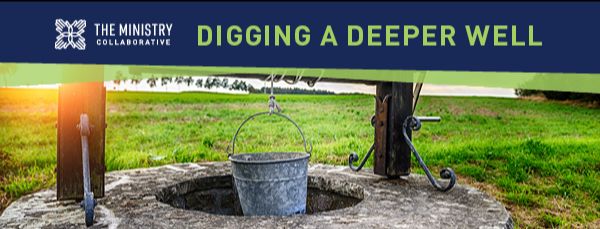If the current season of crisis and change doesn’t end “strategic planning” and consign it to the dustbin of history, nothing will.
Speaking of dustbins, go into most pastors’ offices, and there on the highest shelf you will find the last four strategic planning reports, with their carefully formatted cover pages now crumpled and gathering dust, having not been opened since the night the board adopted them.
What strategic plan could have foreseen this global pandemic and what it has meant for our congregations, let alone our society? Most of us have operated with the assumption that change could happen only slowly and with great pain and planning. Yet fundamental parts of congregational life changed literally overnight because of the urgency presented by Covid-19.
What strategic plan would have anticipated the tidal wave of commitment and support for racial justice and equity from diverse parts of our society, following upon the brutal killings of Ahmaud Arbery, Breonna Taylor, George Floyd, Rayshard Brooks and the sustained and powerful national protests that have emerged in response? Our colleagues who lead black churches report that as the protests swelled in the streets, there was a feeling of affirmation that the struggle for justice and against white supremacy was finding support, just as there was anxiety about how it would progress in a divided nation. At the same time, the well-intentioned task forces on race in many white churches were suddenly outpaced and given real-time urgency with astonishing momentum. None of this would fit into a carefully plotted 5-year strategic plan.
For the most part, this spring has revealed truths and accelerated changes that were already present in our congregational and national life. And one of the truths it has revealed, specifically, is that our strategic plans are often irrelevant. Too often, strategic plans developed by congregations largely look back and then extrapolate the same plans, projects, and perspective into a limited future.
On the other hand, the importance of strategic thinking is now in full view. Strategic thinking is dynamic, nimble, adaptive, and imaginative. Dust cannot collect on a board’s strategic thinking. And it most often begins with a stretching of a board’s imagination of what God is doing and what is possible with the Holy Spirit urging us forward.
So what can a church board do to stimulate strategic thinking?
Since almost all congregational planning is on hold right now, smothered by a dozen questions that have no answer yet, now is the time for a board to stretch its imagination. A wonderful place to begin is to listen to the recent conversation featured on The Ministry Collaborative Podcast with our friend and colleague Amina McIntyre. Among many other insights, Amina shares encouragement for the church to continue using its imagination and offers cautions about what limits that imagination.
Imagining what God is up to is the best move into strategic thinking you can make. Now is the time for your board to become adept at reading scripture together, praying for one another and the congregation, and especially for this broken world in all its raw places. Now is the season for collaboration: find three congregations not particularly like yours (in composition, location, theology, worship style, mission involvement…) and spend an hour each month sharing with the board of that congregation.
A question should be included every time you gather: from the streets and neighborhoods, from homes and workplaces, in places of suffering and places of comfort – where do we see God active in the world today? If you can share your response to that with one another in a trusting way, listen carefully. You just discovered a strategic plan.









No Comments